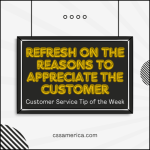
My wife and I go to the same grocery store, but they are totally different experiences. Well technically, we shop at the same grocery store chain but at different locations. Just for the sake of conversation, we’ll call the chain “Food Market” – not original, but appropriate.
Both Food Market locations are a little over one mile from our home, but mine is the flagship store – the Taj Majal of supermarkets. Hers is very small – one of the smallest that the chain owns.
I love my Food Market. There’s plenty of parking, three different size grocery carts, and it’s got everything you need. Best of all are 3 aspects of the experience: 1) The aisles are large – plenty of room to roam or to stop and stare at the vast offerings of pretzels and chips. 2) I know where everything is and in what order to navigate the store to efficiently get what I need. 3) They have 12 (yes 12!) self-checkout kiosks.
My wife loves her Food Market. Have you ever watched the TV show Cheers? A daily bar patron – Norm – walks in, and every customer and employee yells “Norm!!” That’s the way it is for my wife. She has become friends with everyone, enjoys socializing with the check-out clerks, makes special requests, and appreciates the relationships with the staff. She’s in no rush to leave – this is her market.
These Food Market stores are part of the same chain and have essentially the same products, but my wife and I each prefer a different one because each has the experience we desire – and the experiences are VERY different.
Too many business owners and managers think all customers care about is the product and the price. But to many consumers, the experience is the thing.
Find out the desired customer experience (or experiences), and map out a way to delight the customer.
Signup for FREE Tips! Contact Us More Resources for You Visit Our Home Page























